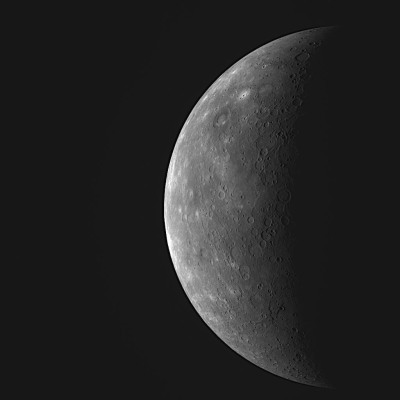EXPLORE: Life Outside of Earth (BrainPop)
Completion requirements
Life in our solar system and beyond
4. READ: Inner Planets' Atmospheres
One thing that can determine whether or not a planet is habitable is its atmosphere. The correct composition of gases is necessary to support life.
Each of the planets in the solar system are unique. Learn more about each planet's atmosphere below:
Mercury
Mercury has no atmosphere because it is so close to the Sun. As a result, heat from the Sun hits the surface of Mercury without any resistance. Because there is no atmosphere the temperatures vary widely each day. At its high point Mercury can reach 430 degrees Celsius and at night it drop to -180 degrees Celsius.
Venus
Venus, in contrast to Mars, has a very thick atmosphere. The clouds are made of sulpheric acid. The thick clouds cause a "greenhouse effect" (much greater than Earth's greenhouse effect), which causes temperatures that are hot enough to melt lead. Venus also has lightning, similar to lightning on Earth.
Earth
As far as anyone knows, Earth is the only planet with life. Earth has an atmosphere that is not too dense, or too thick. It is made up of 78% nitrogen, 21% oxygen and 1% of other kinds of gases. Earth's atmosphere is dense enough to protect us from meteors and some radiation from the Sun.
Mars
Mars does have an atmosphere, but it is 100 times less dense than Earth. Because of the thin atmosphere, temperatures can vary widely: from -125 degrees Celsius to 20 degrees Celsius. Despite these harsh conditions, scientists believe that Mars once had liquid water, just like Earth.
Sources
http://cnx.org/content/m20541/latest/ (CC BY)
http://solarsystem.nasa.gov/planets/profile.cfm?Object=Mercury&Display=OverviewLong (Public domain)
http://solarsystem.nasa.gov/planets/profile.cfm?Object=Venus&Display=OverviewLong (Public domain)
http://solarsystem.nasa.gov/planets/profile.cfm?Object=Earth&Display=OverviewLong (Public domain)
